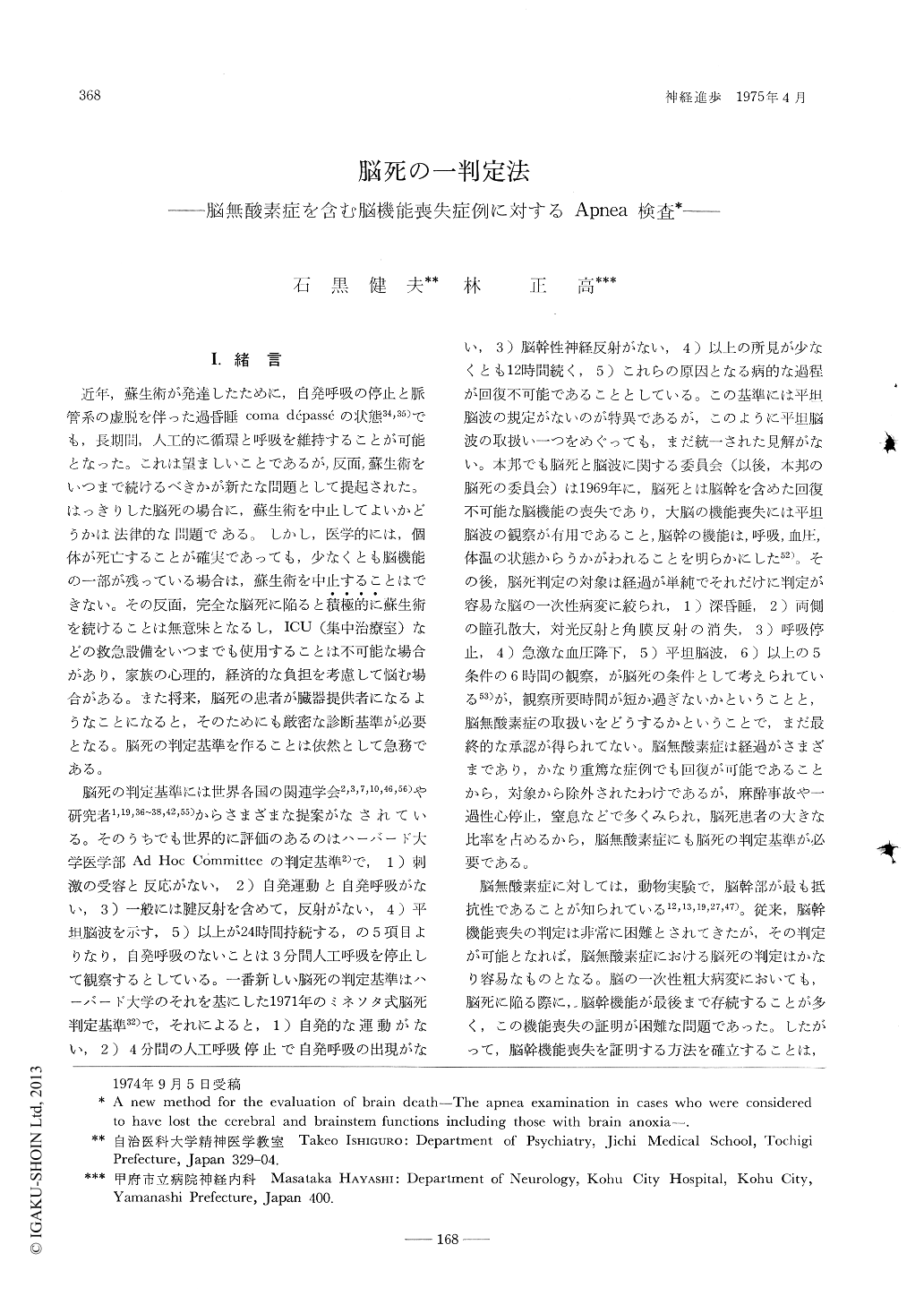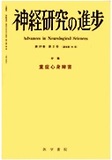Japanese
English
- 有料閲覧
- Abstract 文献概要
- 1ページ目 Look Inside
Ⅰ.緒言
近年,蘇生術が発達したために,自発呼吸の停止と脈管系の虚脱を伴った過昏睡coma depasseの状態34,35)でも,長期間,人工的に循環と呼吸を維持することが可能となった。これは望ましいことであるが,反面,蘇生術をいつまで続けるべきかが新たな問題として提起された。はっきりした脳死の場合に,蘇生術を中止してよいかどうかは法律的な問題である。しかし,医学的には,個体が死亡することが確実であっても,少なくとも脳機能の一部が残っている場合は,蘇生術を中止することはできない。その反面,完全な脳死に陥ると積極的に蘇生術を続けることは無意味となるし,ICU(集中治療室)などの救急設備をいつまでも使用することは不可能な場合があり,家族の心理的,経済的な負担を考慮して悩む場合がある。また将来,脳死の患者が臓器提供者になるようなことになると,そのためにも厳密な診断基準が必要となる。脳死の判定基準を作ることは依然として急務である。
脳死の判定基準には世界各国の関連学会2,3,7,10,46,56)や研究者1,19,36〜38,42,55)からさまざまな提案がなされている。
In the previous paper we reported that, when the patients fell into the state of brain death or suspected brain death, a shock phenomenon of CNS would be seen. We also reported subsequent changes in the neurological status in those patients. In this paper we performed an apnea examination in patients who were considered to have lost their brain functions according to the present criteria of the brain death (Harvard Medical School criteria, Criteria by Dr. Ueki et al.), we should like to present our results and to propose this examination as a new method of the evaluation of the brain death.

Copyright © 1975, Igaku-Shoin Ltd. All rights reserved.


